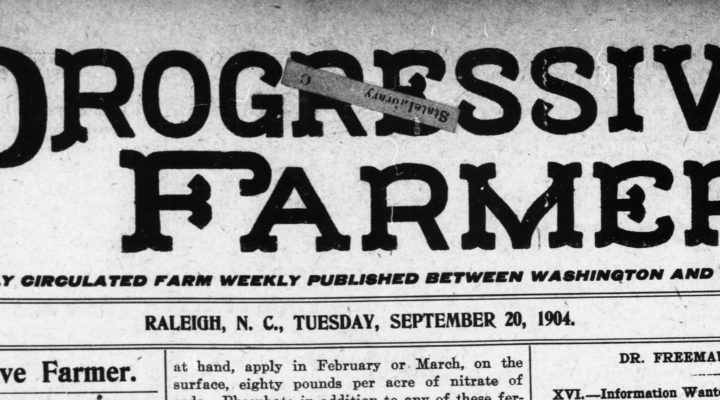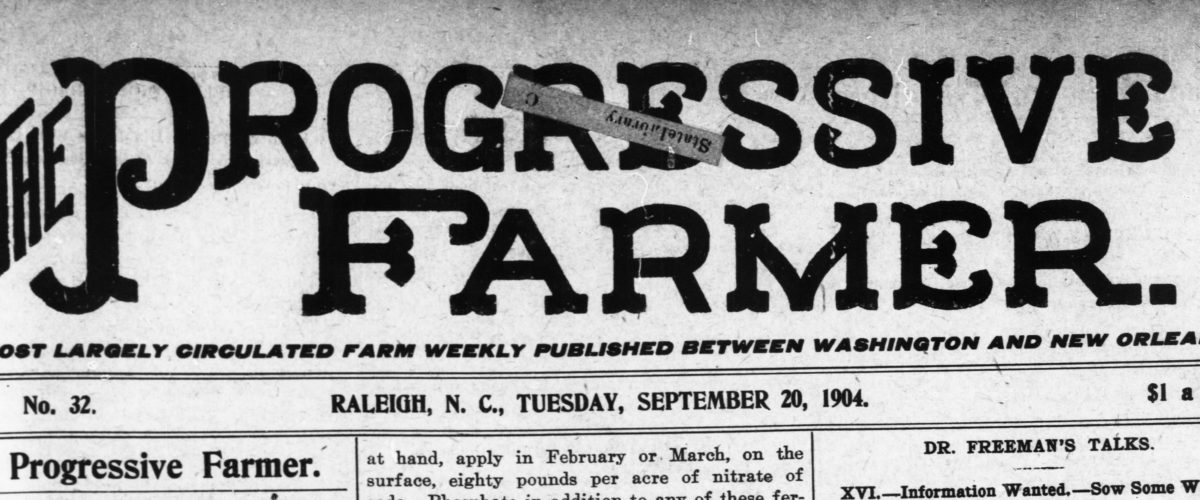Sid Alexander had the option to choose against racism. He lived in a crucial moment. He had meaningful power. He had opportunity to break decisively and publicly with a resurgent white supremacy movement. But Sid could not rise to the occasion.
The year was 1888. The memories of Reconstruction were still fresh, although the country had taken numerous steps back toward entrenched white supremacy since those days. Sid had participated in the armed insurrection in defense of slavery and, as a Confederate officer, had paid a small price for his participation. By 1888, he had seen a new chapter in economic exploitation.

Greg Jarrell
As a farmer a couple of miles outside of Charlotte, N.C., in the Mecklenburg County countryside, he knew city merchants were taking advantage of county farmers in how they paid for goods. He knew the city merchants used their economic power to gain unfair political advantages over Black and white farmers alike. He knew farmers could align together to exert power of their own.
Alexander and white farmers around the state formed new chapters of a national group called the Farmers’ Alliance. They published an influential magazine called The Progressive Farmer.
A parallel group called the Colored Farmers’ Alliance organized around the same time, growing to more than 2 million members across 12 states by 1888.
Yet despite their overlapping interests, the white Farmers’ Alliance insisted on keeping their group segregated. The groups both aimed to change the balance of power that was tilted in favor of white merchants in cities and towns, but the white group held the Black group at a distance.
Despite working in parallel rather than joining together, the Farmers’ Alliances succeeded in challenging the economic powers of their day. Over the course of several election cycles, their numbers and their influence grew. The Alliances naturally fit with a new movement that was forming, albeit uneasily, that would change North Carolina politics for years to come. The movement was called “Fusion.” It joined the Republican and Populist parties into an interracial coalition working for economic justice.

Sid Alexander
Leading up to the election of 1892, Alexander had won himself a large measure of power through both elected office in the Democratic Party and through the growth of the Farmers’ Alliance, which he chaired. The white Alliance itself had become quite influential but was increasingly split over whether to participate in the nascent Fusion movement, and the joining of Black and white farmers working together, or whether to maintain long ties to the Democrats and their white supremacist commitments.
The choice became more stark over the next several elections, in 1894 and 1896.
The power of the Fusion movement grew to the point that their candidates won large majorities across every major political body in North Carolina in the 1896 election. Sid Alexander chose the party of white supremacy and lost his seat in that election.
The following two years saw quick reforms across the state on voting rights, public education and economic issues. Those years held many opportunities for men like Sid Alexander to walk away from the politics of white supremacy and to join a movement that would accomplish the economic goals they had worked on for a decade or more.
“The wiles of the lie called “race” long have seduced white people across this countryside.”
But the wiles of the lie called “race” long have seduced white people across this countryside. Given the opportunity to join multi-racial, anti-racist coalitions, white people hear the siren song of supremacist temptation and respond, even when it leads them far off-course. The youth of a floundering Democratic party led a resurgence through an old, but effective, tactic. They used race as a wedge to divide the Fusion coalition. Unable to win on the merit of their ideas, they instead inflamed the passions of white people committed more to racial domination than to any other principle.
In a preview of the same political methods used in service of white supremacy more than a century later, they staged huge rallies. Their strategy was crude, but effective — appeal to the base impulse of racial hegemony.
Sid Alexander was a sophisticated politician who knew he was working against the economic policy he cared about, but he fell right in line. He led the charge, actually, in 1900. When the white supremacist Democrats threw a huge parade in preparation for that fall’s election, Alexander sat in a seat of honor at the front of the parade. That election finished wiping out the Fusion reforms, a project started after the key election of 1898, and quickly entrenched Jim Crow laws across the state.

Enrty gate to Enderly Park neighborhood (Photo by Nancy Pierce)
I live today on the land that was Sid Alexander’s farm, just a couple of miles from the center of Charlotte. He called his farm Enderly. When his heirs sold the farm for development, they named the new neighborhood Enderly Park. When Alexander walked his acreage, contemplating strategy, he would have walked the ridge that today is Tuckaseegee Road, the main thoroughfare of a neighborhood that is no longer countryside, but is now overheated with gentrification and displacement of long-time Black residents.
Walking the streets here shows that the political calculations Sid would have considered remain rather unchanged, 125 years later. The details have shifted and the parties have realigned — now the Republicans offer anemic ideas couched in naked white supremacy. But the calculus is the same.
And as then, the burden is on white people to finally betray their racial identity and so help to write a different history.
“Given the choice, Sid Alexander could have used his power to shift the state toward economic and racial justice.”
Progress, the story shows, is not inevitable. Given the choice, Sid Alexander could have used his power to shift the state toward economic and racial justice. I’m not sure such moments or decisions can ever be called “clear” for those whose vision has been clouded by their being racialized as “white.” But it was as clear then as it is now, which is to say that it is as clear as it can possibly be on the far side of liberation, that it is possible to break ranks, to choose neighbor-love over domination. Plenty of other white people saw it in Alexander’s day and had the courage to follow. Instead, Alexander cooperated in establishing Jim Crow and the politics of death that still pervade this country.
We stand now on another haunted ridge, testing whether the United States can ever grow fruit that tastes like freedom.
This is not the first walk in such a place. During the heat of the Civil Rights Movement, once again fighting the legacy of white supremacy, Martin Luther King Jr. found a question to crystallize the moment. “Where do we go from here?” he asked. “Chaos or community?”
Greg Jarrell serves at QC Family Tree in Charlotte, N.C. His latest book is A Riff of Love: Notes on Community and Belonging.


